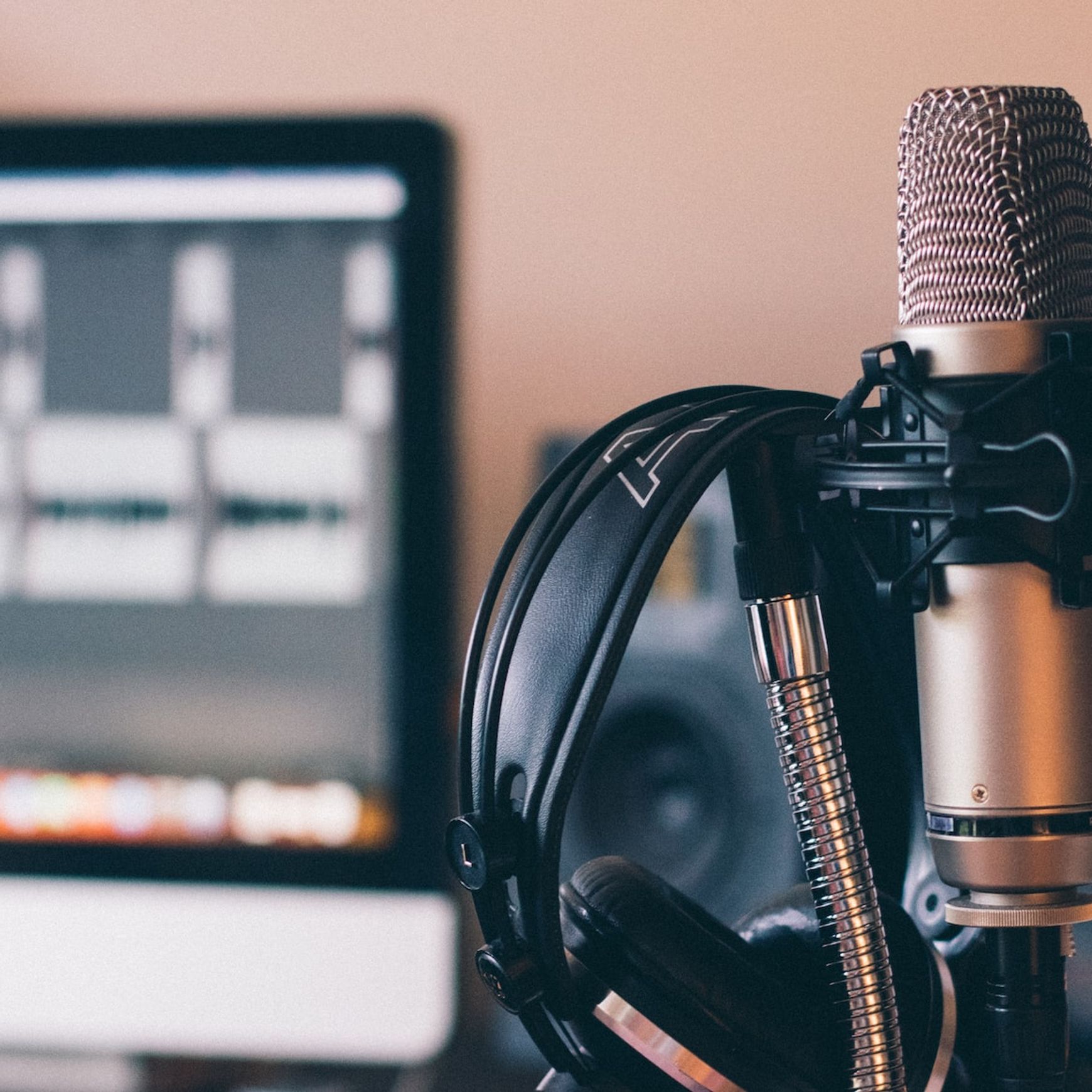How Much Does It Cost To Transcribe Interviews?

Interviews transcription involves co-speeches and audio into readable words. It starts with understanding what is being said from the words, tone, and sentence structure. The final written words should carry the same message as the original speech. Many professions have benefited from interpreting, from business, academics, journalism, legal, research, media, etc. This is because interviews are essential in compiling valid information to help them make reasonable conclusions.
The price you will be charged for transcribing an interview is not specific. There are a few reasons why the price will vary from one platform to the other. Some factors affecting pricing include audio length, audio standard, the period required to complete the task, and the speech makers included. The next thing to consider will be who is handling the transcription. Are you doing it yourself, or are you using the services of an expert consultant? Another option is if you are going to be using a transcription tool like HappyScribe.

While you can transcribe yourself, it can be a hectic task. Considering the number of words an average interview contains, it can take some period to transcribe them manually, mainly because you can't leave any part out. You can take that stress off your shoulders by using an effective transcription platform. Interview transcription has never been more straightforward when you're using a platform like HappyScribe transcription services. We offer high accuracy and correctness, and we can also handle lengthy audio and complex transcriptions. You will be getting all these at an affordable cost, too.
Even though using a transcription vendor comes at a higher cost, remember you are paying for all the packages that come with it. With this program, you can convert your audio into words before you say "jack." It helps you generate results faster and save valuable period so you can channel your energy on other tasks, leading to higher productivity. So, when considering the price, understand that you will get value and well-transcribed words.
Factors influencing the cost of transcription services
As earlier said, pricing for interview transcription varies depending on certain factors. First, how lengthy the interview is is a critical determining factor. This is because you will be charged per minute, and depending on how long the interview is, it will cost you more or less. A longer one will cost more, while a shorter one will cost less.
The second determining factor is the standard of the audio file. Poor audio with jargon, overlapping speeches, unclear sentences, and incoherent phrases will make interpreting more difficult. Hence, it will cost more because it requires more period to comprehend.
Another factor to consider is if you are dealing with a complex interview that contains technical words, many speech-marker and unfamiliar terms. They can make the job of the expert transcription consultant harder because it will consume more periods to toil on, and the more periods it takes, the more the fee for the job.
Furthermore, the delivery period will determine pricing. If you want your job delivered in a shorter period, the fee will be for a premium job so yours will be specially attended to.
Finally, the price for interpreting is also determined by the type of format you want your job to have. Do you want a complete transcription with filler words and all the details to ensure nothing is left out? Does your transcription require a unique formatting style? Are you having a time-stamped transcription? All these will surely raise the price of the job.
Conclusively, we have seen that the fee to transcribe an interview depends on factors like how long it is, delivery speed, standard and complexity, and the type of format used. However, check any vendor's terms and the charges before using them. That is why we lay it bare about our services at HappyScribe. This vendor uses advanced machine-learning algorithms to turn speeches into written transcripts.

Manual vs. automatic transcription: a cost comparison
There are two different types of transcription to consider – the automatic and manual transcription and each has a separate pricing model. Manual means that a human being listens to the interview, understands it and puts it down as a written word. Projects done manually have a higher level of accuracy because humans have a better grasp of different language tones and can filter through unclear words in a noisy environment.
Automatic transcription uses automated speech recognition technology to do the transcription. You cannot compare the level of accuracy of this type of transcription to the previous one. Manual transcription produces more accurate texts by filtering through the accents, unclear words, and jargon. However, automatic transcription is faster since it uses machine learning and is cheaper. You can opt for monthly subscription plans, which enable you to buy a package at once and utilize it throughout the month or year.
Another thing to remember is the post-production that comes with automatic transcription. After interpreting, the project needs editing and proofreading. It will take extra period and effort to ensure correctness and perfection before using it, especially if you're using the material for academic purposes. Manual transcription, on the other hand, is made with higher accuracy and does not require much post-production.
Finally, your requirements for your project will determine the type of transcription to utilize. If you need content with high accuracy and perfection but less bulky, it's best to utilize manual transcription. However, if you have a limited amount to spend and the content volume is too much, opt for automatic transcription as a cost-effective option.
Hidden costs in transcription services you should know about
Apart from knowing how much a transcription will likely cost, one must also understand that there might be extra unplanned costs that might add to the budget. So, when considering how much the fee is, know that hidden charges will give you additional bills.
You might be wondering about the hidden charges we are talking about. One of such is the fees for poor audio. At first, the provider will give you the basic price for a high-standard audio. If, after going through the file, they discover that the audio is poorly recorded with overlapping speeches, background noises, and unclear accents, the provider will increase the price. The more difficult the audio seems to transcribe, the more your bills. So, to reduce your charges, ensure you're using a quiet place to record interviews.
The second thing that can give you hidden charges is the cost of period stamps. While some providers include this as part of your price, others require you a fee separately for period stamps. If you are in the journalism or research field, you need it for proper referencing, so ensure that you know the terms and offer the cost covers.
Another determining factor of price is the delivery speed. There is an extra cost if you want a super fast delivery. It will cost you more if you have an urgent project that requires the transcription vendor to deliver before the delivery date. However, you can bring your project early to save money.
Finally, the type of formatting used for your document will amount to you paying more for it. If you want a formatting style on request or specific words like ahhas, yeah, uhms to appear still as it is in the written words, there is an extra fee.
Whenever you want to patronize any transcription vendor, remember to find out what the hidden charges are. If you are presented with a price quote, go through it to see all the features they offer. This helps you know what you are paying for, and you won't be surprised at your bill.
Tips for reducing transcription costs without sacrificing quality
Transcription can be costly, particularly for businesses or individuals who frequently require such services. However, several ways exist to reduce transcription costs without compromising the output standard. Here are some practical tips to help you minimize expenses while still receiving the high-standard transcriptions you need.
Invest in good recording equipment
Firstly, consider investing in good recording equipment. Poor audio can significantly increase the time a transcriptionist takes to complete the work, increasing the cost. By ensuring your recordings are clear and free from background noise, you can reduce the period and effort required for transcription, thus lowering the overall cost.
Select a good transcription vendor
Another tip is to choose your transcription vendor wisely. Different companies offer different rates and pricing structures, so you must do your due diligence in researching the best option for your unique needs.
Some services offer discounts for bulk work or longer projects, while others might have cheaper rates for slower delivery times. Remember to ask about any potential hidden fees or charges, as these can quickly add to the overall cost.

Outsource tasks to third-party services
Outsourcing transcription tasks to offshore companies can also be a cheap solution. Many reputable companies based in countries with lower labor costs offer high-quality transcription at a fraction of the price compared to local alternatives. However, it's crucial to ensure these companies maintain strict standard control to guarantee the accuracy of the transcriptions.
Use automated transcription
Finally, consider using automated transcription for initial drafts, especially if you're working with a tight budget. An AI-based software can rapidly transcribe audio at a much lower price than human transcription.
Happy Scribe, for instance, uses its powerful AI to identify essential points, create pertinent headers, and arrange the material for readers. This expedites content generation by saving a sizable amount of time that would otherwise be required for manual editing.
However, remember that automated transcriptions are not 100% accurate and may require human proofreading to correct errors or omissions.
You can also use Happy Scribe's expert transcription to avoid proofreading the material. This choice can be made either before or after the transcription process. An accurate proofreader will then review the text within a day.
To sum up, while transcription can be costly, strategic planning and careful selection of vendors can significantly reduce these costs without sacrificing the standard of the transcriptions.
Get the most affordable interview transcription with HappyScribe
You understood the benefits of getting interview transcriptions, but are you considering the cost? You can enjoy the most affordable price when you choose Happy Scribe. We offer both human and AI transcription services, depending on your needs.
A minimal language barrier will exist if you utilize the HappyScribe transcribing service because it supports over 119 languages. The lovely thing is that you may select a language depending on its distinctive dialect and that all accessible languages are extensively used. These elements are all there to guarantee that you receive the most excellent transcriptions.
In addition, we provide additional paragraphs based on speakers, enabling administrators to add notes and alter transcripts in real time. Users can save files using TLS, HTTPS, PCI DSS, and ISO. One of the best options, if you require transcription, is the HappyScribe transcription software.
Frequently Asked Questions
Is it necessary to transcribe interviews?
Absolutely! Interview transcription ensures accuracy in reporting and makes it easier to find story connections between interviewees. Our brain fills in the gaps when it can't hear what an interviewee said, but those words may not be accurate. And skimming and scanning the written words is much faster than streaming hours of audio, making story connections jump off the page.
How can I improve the accuracy when I transcribe interviews to text?
To get the highest possible accuracy rate when you transcribe interviews to text you need to upload a high-quality audio file. To obtain a high-quality audio file, it is advised that you maintain a consistent recording environment, avoid background noise, use quality microphones, and ensure that speakers talk directly into the microphone and avoid talking over one another.
How accurate are HappyScribe transcription services?
Ongoing technological advances continue to improve the accuracy rate of automatic transcription. Depending on the audio quality, speaker accents, and technical jargon, our automatic transcription software can achieve up to 85% accuracy. And with the help of our professional transcribers, your transcripts can be 99% accurate.
What is an interview transcription?
An interview transcription is a written record of a spoken interview, converting video or audio into text.
Transcriptions can vary: verbatim transcription (captures every word and it is usually done with automatic transcription), edited transcription (without fillers, small talk...) and summary transcription (no word-for-word accuracy needed). Software like HappyScribe allows companies, journalists, researchers and HR specialists to find the type of transcription that better suits their needs.
Can AI transcribe an interview?
Yes, AI can produce interview transcriptions. Different softwares transcribe audio and video to text, using automatic speech recognition (ASR) to convert spoken words into written text. The main aspects to keep in mind when choosing an AI transcription software are: accuracy, speed, languages, integrations with other tools and cost.
How to automatically transcribe an interview?
Transcribing an interview using automatic AI-powered tools is easy. You just need to upload your interview file to an AI-based software for interview transcription, like HappyScribe. HappyScribe and other transcription tools support common audio and video formats like mp3, wav, mp4, m4a and many others. Then, you just need to click on automatic transcription and wait for a few minutes to get your interview transcription. The process may need more time for longer files.

André Bastié
Hello! I'm André Bastié, the passionate CEO of HappyScribe, a leading transcription service provider that has revolutionized the way people access and interact with audio and video content. My commitment to developing innovative technology and user-friendly solutions has made HappyScribe a trusted partner for transcription and subtitling needs.
With extensive experience in the field, I've dedicated myself to creating a platform that is accurate, efficient, and accessible for a wide range of users. By incorporating artificial intelligence and natural language processing, I've developed a platform that delivers exceptional transcription accuracy while remaining cost-effective and time-efficient.


